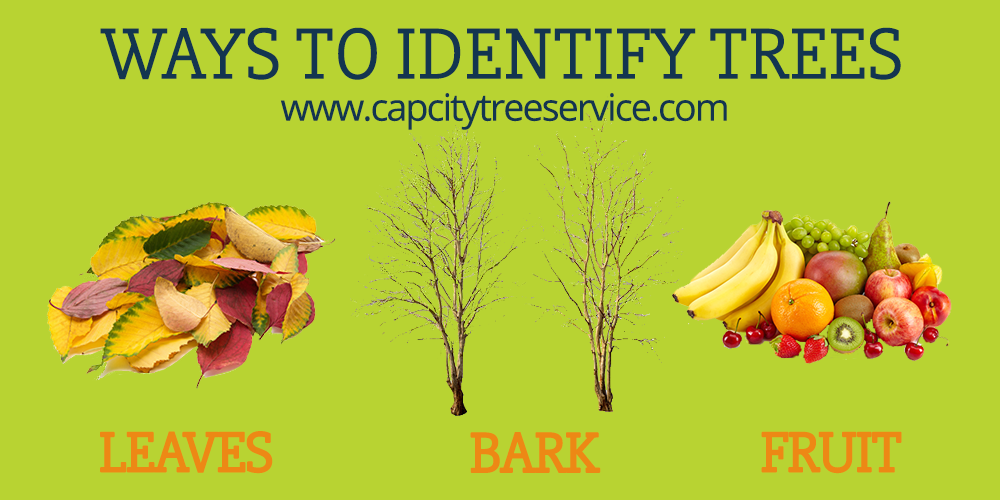Tree Identification Methods
There are four main ways someone can identify the type of tree they have. In general, however, identifying a tree is just the first step in maintaining it!
Some methods you might use to identify trees include:
Identify Trees by Leaf
Trees usually have one of three leaf structures. Leaves on trees most often appear as needles; can be described as scaly; or are flat in structure.
Trees with needles for leaves are coniferous, meaning they come from the conifer family and are often called pine trees. Evergreens and coniferous shrubs would fall into this category, and the needles might come up in groups, singly on a twig, or in a whorl pattern, and they usually stay on the tree through winter.
Trees that have scaly leaves, on the other hand, might also be conifers, but are more likely than not juniper trees or cedar trees. These types of leaves are slender like needles and can be prickly, but not always. Although cedar are typically in specific areas in the U.S., such as the Northeast and Northwest, juniper trees and shrubs can be found throughout the U.S.
Finally, trees with flat leaf structures are deciduous trees, meaning they shed their leaves with the seasons. This is one trait that differentiates these trees with coniferous trees which retain their leaves in colder conditions. The leaves of deciduous trees are often flat or broad and come in many shapes. In general, flat leaves are either simple or compound. Simple leaves are often found on trees like sycamores and have just one leaf attached to the stalk, whereas compound leaves (like those found on pecan trees) have multiple leaves attached to a stalk.
Identify Trees by Bark
Let’s say it’s winter and you’d like to identify your trees. Identifying by leaf structure is going to be a little bit more difficult if they aren’t present, and looking at the fruits of the trees will be difficult as well because most fruits are produced in the spring!
Although not always definitive, you can examine a tree’s bark to determine the type of tree it is if looking at its fruit or leaves is not an option. Identifying coniferous trees should be relatively easy during any season because they retain their needles. However, if a coniferous tree has disease or damage, it might not retain its needles and will need the skilled care of an arborist to examine it and start a treatment plan.
For other trees, especially in the Midwest (such as states like Arkansas), you can use the bark and tree structure to determine what it is. First, look at the branches in the upper part of the crown (not from the main trunk). If the tips of the branch are opposite, the tree falls into a few groups: the tree could be a maple; an ash; a dogwood; a buckeye; or a member of the Caprifoliaceae family (commonly called the honeysuckle family, which are typically considered shrubs more often than trees). All other species of trees will have alternate branching.
After you have looked at the branching, you can look at the bark to further narrow down the possibilities. For trees with opposite branches, the pattern on the bark will determine the type of tree it is. Trees with a diamond, X pattern, or “alligator skin” pattern are ash trees. If the tree has a square plate pattern of bark and appears to be shorter (like an understory tree that can thrive in the shade of other trees) and narrower in diameter (less than 1 foot in diameter), then the tree is a dogwood. If the bark is a light gray color and looks “splotchy,” and the bark is smooth to the touch, the tree is a buckeye tree. Trees that have opposite branches but none of the previous characteristics are maple trees.
Identifying trees with alternating branches based on their bark can be a little more complex because they encompass a larger variety of trees. Some ways you might start to narrow down these trees include looking at the patterns on the bark; checking for thorns or if the bark is peeling in specific places; looking at the interior of bark segments you break off from a branch; seeing if the bark has corky projections or deep furrows; and other considerations. Refer to the section about identifying trees with alternative branching in this article for more specific information.
Identify Trees by Fruit
The fruit a tree produces can help you identify it because each seed-bearing tree has very specific fruit. For example, many coniferous trees bear pine cones or in a cone-like fruit with overlapping scales. These are easy to identify at any time of year. Some cones are longer in shape whereas others are smaller (usually an inch or less in diameter). Larger cones might end in scales with one or two wings and be soft and fleshy, or dry and hard. Other trees, outside of the conifer family, that have cones include birch trees, alder trees, cucumber trees, tulip trees, and many others.
Other types of fruit to be aware of in your tree identification include trees with winged fruit. The two types of winged fruit commonly seen include those with one wing or two wings, and if there is more than one wing, the wings might be separated widely, narrowly, or at an intermediate angle. Common trees with fruit having two wings are usually some variety of maple tree.
In contrast, trees with only one wing might have an actual wing or an apparent wing with a nut or bladder-like sac. If the fruit has a single, elongated wing, and the seed cavity is round or flattened but the fruit it bears is elongated, the tree may be an ash tree. Alternatively, if the fruit is only apparently winged but has a nut or a sac, the tree is more likely an American Hornbeam or Eastern Hophornbeam.
Other types of fruits to watch for when identifying trees include acorns, fruits inside of a pod or capsule, or other types of seeds and fruits. Refer to the Ohio Public Library Information Network resource for more details.
You will want to make sure you work with a skilled, certified arborist to have a good idea of how frequently you will need tree maintenance, plus any other care you might need to provide, such as tree injections that benefit the tree overall. And, should it come to tree removal for a tree that is decaying or dead, a certified arborist is there to help you safely and properly remove it.
Common Trees in Arkansas
Despite human encroachment and industry since settlers came to the United States, the state of Arkansas has a surprisingly high amount of forestry. According to some estimates, the state is over 50% forested.
The most common trees found in Arkansas are typically oaks, maples, hickories, plums and cherries, and hawthorns. These genera of trees make up 110 of the 185 woody plants considered trees in the state, and some are considered native to the state whereas others are not.
The two most significant pine trees in Arkansas that are most distributed throughout the state as well as of economic importance include the shortleaf pine (Pinus echinata) and the loblolly pine (Pinus taeda). Pine trees as a whole are integral to Arkansas’ economy for timber and reforestation in the state.
Common Tree Problems
If you have trees on your property, you need to be aware of some common problems you might encounter. Some of the most common problems trees often have include:
- Drought
- Diseases, such as oak wilt, Dutch elm disease, and others
- Mites
- Borers, especially emerald ash borer which has been prevalent throughout many states in the Midwest region
- Scale insects
- Leaf eating insects
- Winter injury
- General tree decline
Our team of skilled arborists are aware of various tree issues that might come up and work to find helpful solutions such as tree trimming, tree injections or, if a tree has declined past any point of reviving it, tree removal. Our tree services are second to none!
Contact Our Little Rock Tree Care Experts
If you live in the Little Rock area and want assistance with your trees, Capital City Tree Service has the expertise you need to make an informed decision that helps your investment in your trees and property pay off for years to come. Contact us today to see how we can help!






